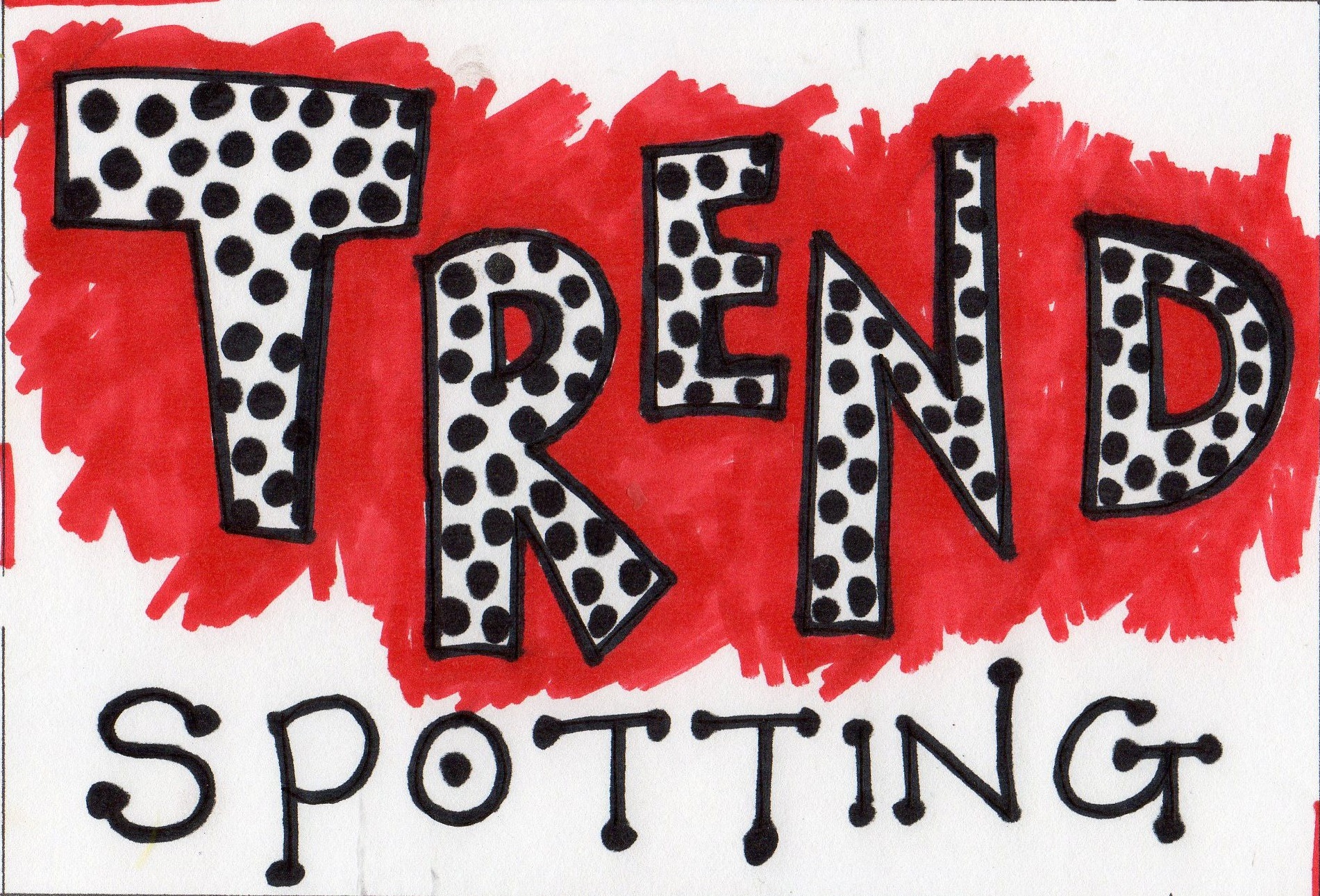 Trend-spotting is big money these days. If you can spot the “next big thing” you could be among the first to cash in on it. What’s even better is that you don’t have to spend a lot of money to know what’s about to happen.
Trend-spotting is big money these days. If you can spot the “next big thing” you could be among the first to cash in on it. What’s even better is that you don’t have to spend a lot of money to know what’s about to happen.
Big companies increasingly gear themselves for a rapid response to what’s out there in the marketplace. If an entrepreneurial company invents something that’s instantly all the rage the big companies will be likely to buy out the innovator and mass-produce as many copies of the item until the market is saturated and its popularity wanes.
But how did the entrepreneurial company get its idea in the first place? Most likely it has people on its team who kept their eyes open, looking for trends as they develop. It’s really a kind of forecasting but not limited by what’s gone before.
Just remember the difference between a fad and a trend. A fad is a response to something that’s already happened; it’s no longer new and is over quickly. A trend, on the other hand, is a much longer term proposition with an underlying strength that can carry it along for years. Here’s how to spot trends:
1. Look at What’s Selling
Trends start small and grow, but they always begin at the retail level. Fashionistas are among the best trend-spotters and will spend hours browsing clothiers to see what’s moving out of the stores. Because they know what’s already been selling their senses are geared to spotting only what hasn’t sold previously but is suddenly growing in volume.
2. Talk with People You Don’t Know
Accountants talk most often with other accountants. Teachers talk most often with other teachers. We don’t talk often enough with those from other industries, other cultures and other ways of life and as a result our horizons are sadly limited. If you could find one new topic that’s of interest to a fireman, a gardener and a computer programmer you’d be at the cutting edge of trend-spotting.
3. Read a Lot
People have a tendency to be fairly restricted in the scope of their reading matter. There are “women’s” magazines, “men’s” magazines, and separate magazines for those interested in topics as diverse as aeronautical engineering and clay pot design. Very few of us read outside our usual titles, but the wider the variety of magazines you peruse the more you’ll be able to pick up on trends as they develop.
4. Brainstorm with a New Group
Most of us are in a “group” of one kind or another. It could be an neighborhood theater company, a football team, or a society of amateur astronomers. Groups have meetings and these can sometimes grow a bit stale, so why not suggest livening up the evening with a brainstorming session? Spend about fifteen minutes doing something different and brainstorm a topic like “future trends” or “what’s new” to see what comes up.
5. Surf the Internet
If something’s on its way to becoming a trend the chances are very good that it will be talked about on the Internet first. The rise of “blogging” means that new topics are being aired every day, and some go around the world with viral velocity. Read what others are writing about on the Internet and you’ll know which topics are capable of stimulating conversations and emotions.
6. Watch what People do for Fun
Trends often begin with a quest for fun, for enjoyment and for pleasure. These are reflections of deeper wants and needs that exist across borders and cultures. Trends in food for example give rise to the popularity of cuisines like Mexican and Thai, but they’re really satisfying a need for variety in doing what we have to do to stay alive — eat! Don’t forget too that some trends are “retro” — the rapid growth of digital photography has given rise to clubs of photographers that enjoy taking pictures with simple film cameras and processing their own film.
Spotting a trend is largely about keeping your eyes and your mind open. It’s a kind of research but it’s very informal and doesn’t follow any structure. It’s best done by associating with other people, especially those who are from other lifestyles and cultures than your own.
The future is always a result of the present and the trends of the future are beginning right now. Those who are the first to recognize them can apply their entrepreneurial skills and take advantage of a growing market that will richly reward its trendspotters.
Copyright 2005, RAN ONE Inc. All rights reserved. Reprinted with permission from www.ranone.com.

 Chris’ combination of academic credentials, career experience and temperament ideally suit his calling as a business development advisor. Clients say he has a mind for business and a heart for service.
Chris’ combination of academic credentials, career experience and temperament ideally suit his calling as a business development advisor. Clients say he has a mind for business and a heart for service.